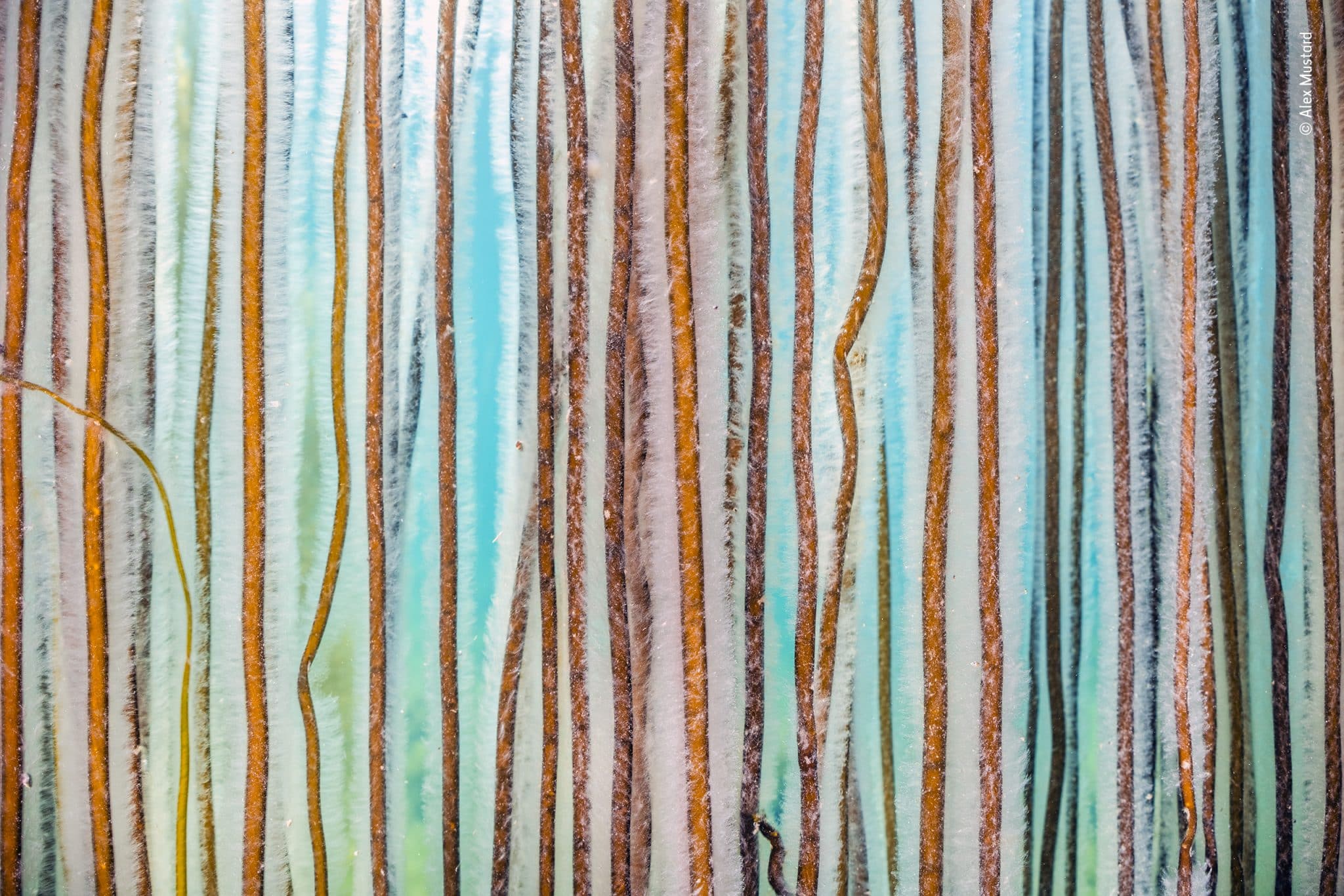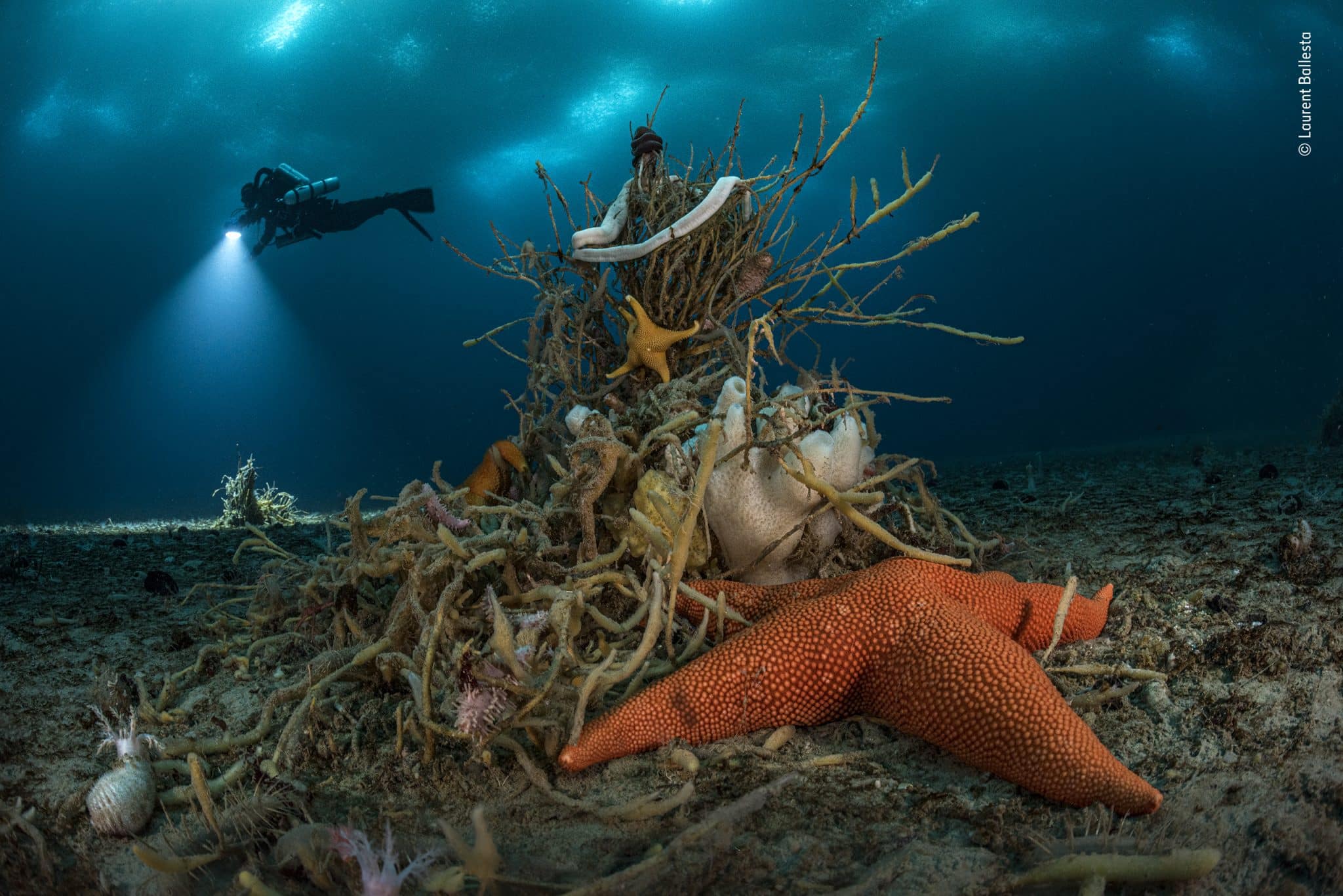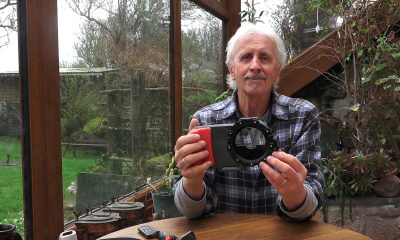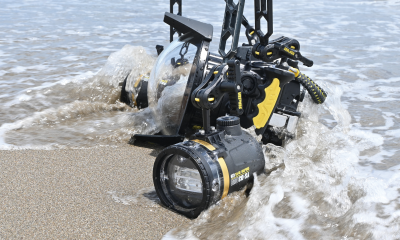News
Tony Wu tops Wildlife Photographer of the Year 2022 underwater winners
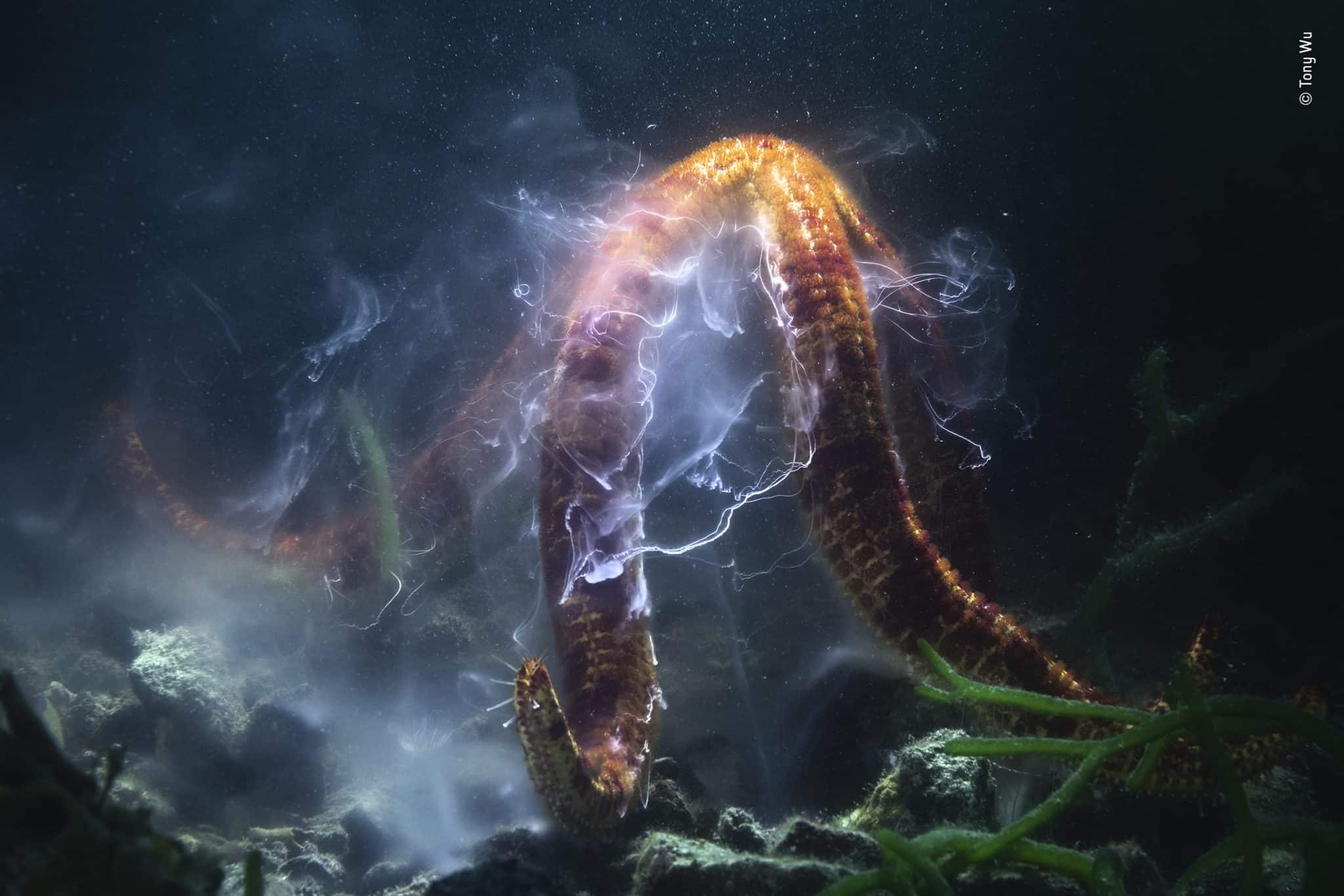
The Underwater category of Wildlife Photographer of the Year 2022 has been won by Tony Wu with his image ‘Shooting star’ (pictured above). Tony, who describes himself as ‘a photographer who takes photos (mostly) underwater’, took the winning image of a spawning sea star in Kinko Bay, Kagoshima Prefecture, Japan.
As the surrounding water filled with sperm and eggs from spawning sea stars, Tony faced several challenges. Stuck in a small, enclosed bay with only a macro lens for photographing small subjects, he backed up to squeeze the undulating sea star into his field of view, in this galaxy-like scene.
The ‘dancing’ posture of spawning sea stars rising and swaying may help release eggs and sperm, or may help sweep the eggs and sperm into the currents where they fertilise together in the water.
Technical details: Nikon D850 + 105mm f2.8 lens; 1/250 sec at f18; ISO 320; Nauticam housing; Backscatter Mini Flash 1 + Inon S2000 + Z240 strobes; RGBlue compact tripod
Tony Wu was one of 19 category winners in this year’s competition that saw underwater and marine images feature highly throughout the awards.
Amongst the Highly Commended images in the Underwater category was an image by Belgian photographer Ellen Cuylaerts.
Liquid silver by Ellen Cuylaerts, Belgium
Highly Commended, Underwater
Ellen Cuylaerts is surrounded by schools of glittering silversides swirling around their predators.
The moment Ellen learnt the silversides were back, she grabbed her diving gear. Surrounded by schools of the small fish zipping apart to let the larger Atlantic tarpons through felt like ‘swimming through silver curtains’.
In summer, thousands of silversides arrive from deeper waters to lay their eggs on the sandy shores around Grand Cayman. By day they hide in grottos between coral reefs – but they are not free from danger as predatory tarpons lurk there too.
Location: Devil’s Grotto, George Town, Cayman Islands
Technical details: Nikon D800 + 16mm f2.8 lens; 1/160 sec at f7.1; ISO 500; Nauticam housing; Sea & Sea YS-250 strobes.
Well-known UK photographer Alex Mustard, a frequent winner at the awards, scored a High Commended in the Plants and Fungi category.
Seaweed symmetry by Alex Mustard, UK
Highly Commended, Plants and Fungi
Alex Mustard finds the perfect conditions to showcase the beauty of seaweed.
Confined to the UK coast during the Covid-19 pandemic, Alex developed a love of seaweeds. This image, showing colourful fronds of bootlace seaweed reaching for the light, took planning and precise conditions: a high tide, clear water, calm weather and sunshine.
Bootlace seaweed is hollow, allowing gas to accumulate towards its tip and keep it afloat. Seaweeds forming underwater kelp forests play important roles as foundations for coastal habitats, feeding and sheltering hundreds of marine animals.
Location: Kimmeridge Bay, Dorset, UK
Technical details: Nikon D850 + 28–70mm lens; 1/40 sec at f16; ISO 160; Subal housing + Nauticam WACP-1 lens; 2x Retra Pro strobes.
Winner in the Portfolio category was French photographer Laurent Ballesta with his portfolio of six images – ‘Under Antarctic ice’ – taken in Adélie Land, Antarctica.
Laurent Ballesta endures below-freezing dives to reveal the diversity of life beneath Antarctica’s ice. An underwater photographer and biologist, Laurent has led a series of major expeditions, all involving scientific mysteries and diving challenges, and all resulting in unprecedented images. He has won multiple prizes in Wildlife Photographer of the Year, including the grand title award in 2021.
His expedition to Antarctica, exploring its vast underwater biodiversity, took two years to plan, a team of expert divers, and specially developed kit. His 32 dives in water temperature down to -1.7˚C (29°F) included the deepest, longest dive ever made in Antarctica.
Pyramid of life by Laurent Ballesta, France
Living towers of marine invertebrates punctuate the seabed off Adelie Land, 32 metres (105 feet) under East Antarctic ice. Here, at the centre, a tree-shaped sponge is draped with life, from giant ribbon worms to sea stars.
Technical details: Nikon D810 + 13mm f2.8 lens; 1/13 sec at f16; ISO 800; Seacam housing; 2x Seacam strobes.
Wildlife Photographer of the Year is developed and produced by The Natural History Museum, London. In an intensive process, 38,575 entries from 93 countries were judged anonymously by an international panel of experts on their originality, narrative, technical excellence, and ethical practice. Dr Doug Gurr, Director of the Natural History Museum comments:
“Wildlife photographers offer us unforgettable glimpses into the lives of wild species, sharing unseen details, fascinating behaviours and front-line reporting on the climate and biodiversity crises. These images demonstrate their awe of and appreciation for the natural world and the urgent need to take action to protect it.”
The redesigned flagship exhibition which is now open at the Natural History Museum, London, positions the photographs among short videos, quotes from jury members and photographers as well as insights from Museum scientists to invite visitors to explore how human actions continue to shape the natural world. Sponsored by global green energy company Ørsted, it runs until 2nd July 2023 and will later tour the UK and internationally.
The 59th Wildlife Photographer of the Year competition will open for entries from photographers of all ages, nationalities and levels on Monday 17th October 2022.
For more information, please visit here: www.nhm.ac.uk/wpy
Header Image: Tony Wu / Wildlife Photographer of the Year
News
Book Review: Fire on Monroe Bravo by Fred Lockwood

Fire on Monroe Bravo is the latest book in the Jack Collier series by Fred Lockwood. Our story begins with our lead characters, Jack and Sandro, owners of Marine Salvage & Investigation Company, arriving on the Monroe Bravo Oil & Gas Platform in the North Sea. Having secured a contract for their vessel the MV Stavanger to act as support ship to the platform for TransGlobal Oil, our protagonists are on a celebratory visit.
However almost as soon as they arrive a series of explosions rock the platform, causing huge damage, loss of life and the very real danger of a massive human, ecological and financial disaster.

As the danger mounts for both our heroes and the surviving workers, Jack and Sandro will have to escape the inferno, all while trying to save the platform and the men still trapped unable to help themselves.
The disaster sets the scene for the unfolding story lines following the fate of the platform and our main characters, the police investigation into a suspected terrorist act and the actions of TransGlobal Oil as they attempt to navigate the pubic outcry and financial repercussions.
In his eighth book, Fire on Monroe Bravo, Fred Lockwood delivers an explosive thriller, with plenty of above and in-water drama, and our heroes fighting for survival, what more can you ask for?
We thoroughly recommend this read and look forward to the next in the series. For more information about his book series, you can check out the reviews of his previous books here on Scubaverse.
- Title: Fire On Monroe Bravo
- Author: Fred Lockwood
- ISBN: 979-8325324536
Available in a paperback version and for Kindle from Amazon and book stores.
Blogs
Alonissos: The complete diving destination (Part 1)

In June we were incredibly fortunate to be invited to dive in Alonissos, a small Greek Island in the Sporades island chain located in the North Aegean Sea. While I have long been a big fan of the Greek Islands as a great holiday destination, I had not had the opportunity to do any diving on previous visits and Mike and I were extremely excited to see what Alonissos had to offer both above and below the surface!

The Sporades are easily accessible via the airport in Skiathos (the first island in the chain), which is served by Jet2 flights from all major UK airports from May through October. Numerous ferries and charter boats make island hopping from Skiathos Town a breeze. After an hour boat ride, the picturesque port of Patitiri was a wonderful introduction to Alonissos, where we were met by our gracious hosts Kostas of Albedo Travel and Dias of Alonissos Triton Dive Center. Mike and I were delighted to be staying at the Paradise Hotel, aptly named for its stunning views over the sea and great location for walking to the waterfront.

Alonissos is beautifully situated in the National Marine Park of Alonissos and the Northern Sporades, the largest marine protected area in Europe. The surrounding seas offer fabulous marine life, including incredibly rare species such as the Mediterranean monk seal. They boast deep walls covered in gorgonians and sponges, stunning topography with caverns, swimthroughs and pinnacles, and the first accessible ancient shipwreck from 500BC!

In locations where historical sites have been reported, the waters are largely restricted, but with collaboration between government, underwater archeologists and dive centres, incredible underwater museums are being created for a truly unique diving experience. Alonissos is home to the first of these, the Ancient Shipwreck of Peristera Accessible Underwater Archeological Site. The chance to dive into history (along with reports of healthy reef life and amazing underwater topography) meant Mike and I were keen to get in the water.

Our introduction to the diving around Alonissos was at the Agios Georgios Pinnacles, in the channel between Alonissos and Skopelos. This fantastic site was named “The Chimney,’ and proved to have a huge amount to see. We got to a decent depth here (over 25m), and marvelled at a colourful reef wall with a wonderful swim through whose rocky walls were absolutely covered with life. As well as brilliant topography there was no shortage of macro life here. We saw numerous nudibranchs, five different species in total. The second dive at Mourtias reef nearby was a shallower dive along a nice wall with lots of crevices. Several moray eels and grouper called this site home. We enjoyed looking in the crevices for lobster and smaller benthic life, such as cup corals and tunicates.

Our itinerary allowed us two dives a day with afternoons left to explore the island with our hire car and evenings to enjoy the famous Greek hospitality. This proved to be a lovely mix of in-water and land based diversions.

The next days diving to the Gorgonian Gardens and Triton’s Cave was to be even better! These two stunning sites are nothing short of fabulous. The Gorgonian Gardens was a deep wall near to the Agios Georgios islands. The ever-present currents in this deep channel meant that the sea life was amazing … the namesake Gorgonian sea fans dotted the wall at a depth of 30 to 50 meters, getting ever larger the deeper we went. Above 30m was by no means less beautiful, with sponges, corals, scorpionfish, moray eels and some rare and colourful nudibranchs.

The second shallower dive of the day was to Triton’s Cave or the Cavern of Skopelos, on the east side of that island. The spectacular rock formations had wild striations both above and below the water making a truly epic topography. The cavern entrance was at 14m, and big enough for a buddy pair, winding up to 6m and passing two beautiful windows out into the blue. Emerging from the cavern, the light at the shallower depths and the incredible rock formations made for a fantastic gentle swimming safety stop and we all surfaced by the boat with massive grins.

Check out our next blog :Alonissos: The complete diving destination (Part 2)” to hear about our amazing dive on the 2500 year old Peristera Wreck!
Thanks to:
Alonissos Triton Dive Center https://bestdivingingreece.com/
Albedo Travel https://alonissosholidays.com/activities/
Paradise Hotel https://paradise-hotel.gr/
Alonissos Municipality https://alonissos.gr/en/
-

 Blogs2 months ago
Blogs2 months agoDiving With… Nico, Ocean Earth Travels, Indonesia
-

 News1 month ago
News1 month agoMurex Bangka Announce New Oceanfront Cottages & Beachfront Dining
-

 Blogs2 months ago
Blogs2 months agoA new idea in freediving from RAID
-

 Marine Life & Conservation1 month ago
Marine Life & Conservation1 month agoIceland issue millionaire whale hunter a licence to murder 128 vulnerable fin whales
-

 Marine Life & Conservation2 months ago
Marine Life & Conservation2 months agoThe Shark Trust Great Shark Snapshot is back
-

 News3 months ago
News3 months agoCharting New Waters; NovoScuba Goes Global with the Launch of their Revolutionary Dive Training Agency!
-

 Gear News1 month ago
Gear News1 month agoNew Suunto Ocean – a dive computer and GPS sports watch in one for adventures below and above the surface
-

 Marine Life & Conservation Blogs2 months ago
Marine Life & Conservation Blogs2 months agoBook Review: Plankton



